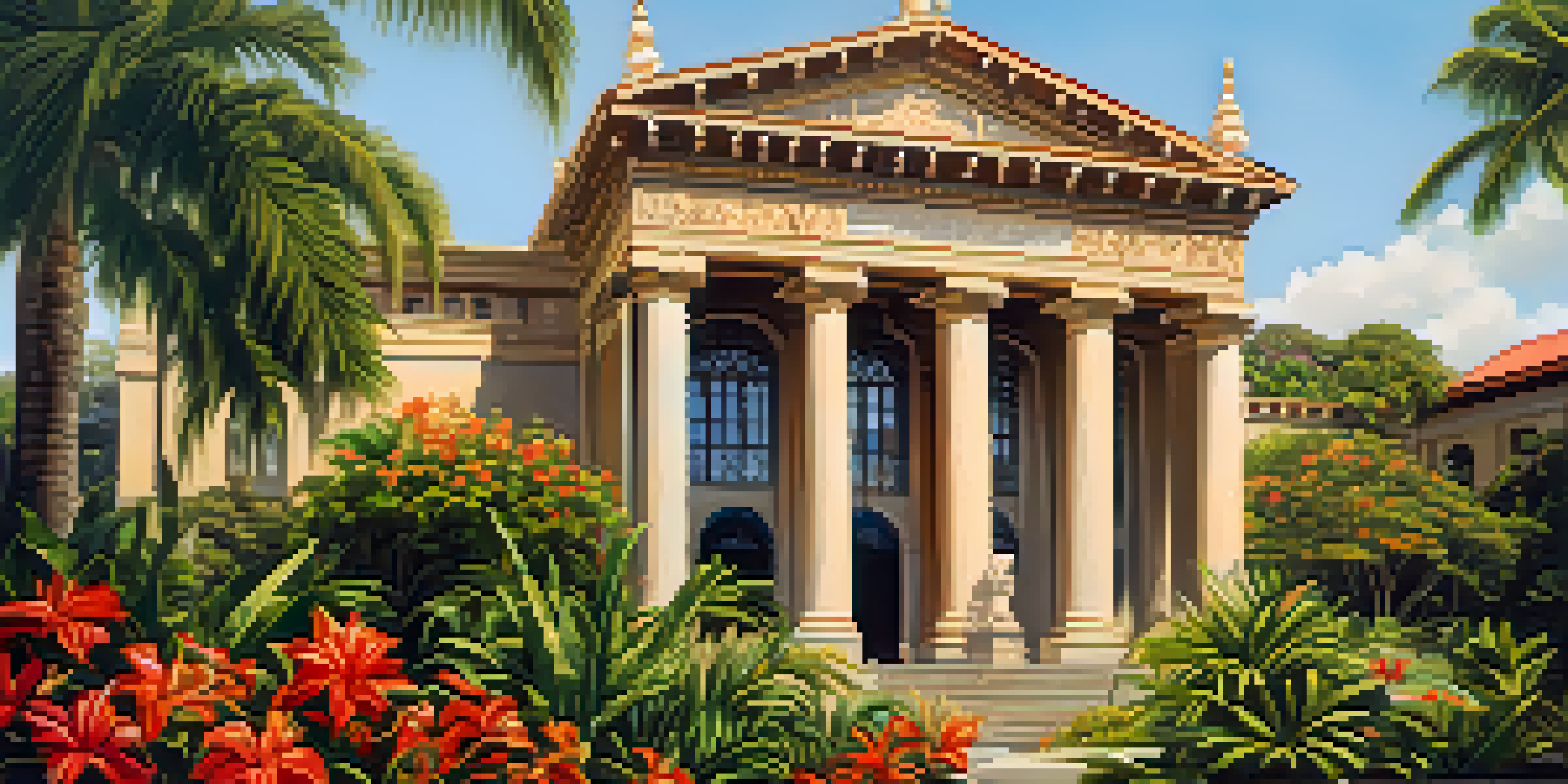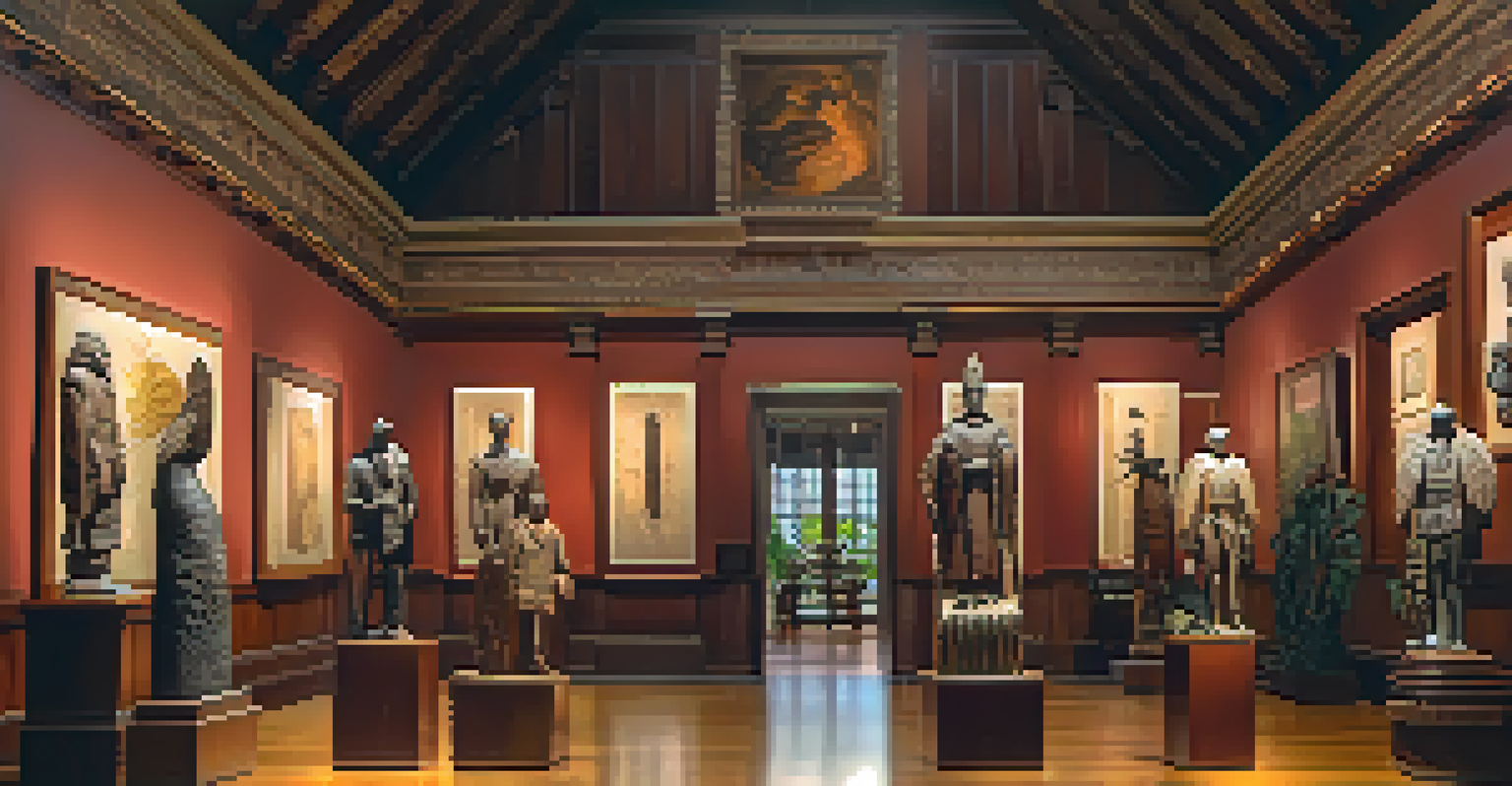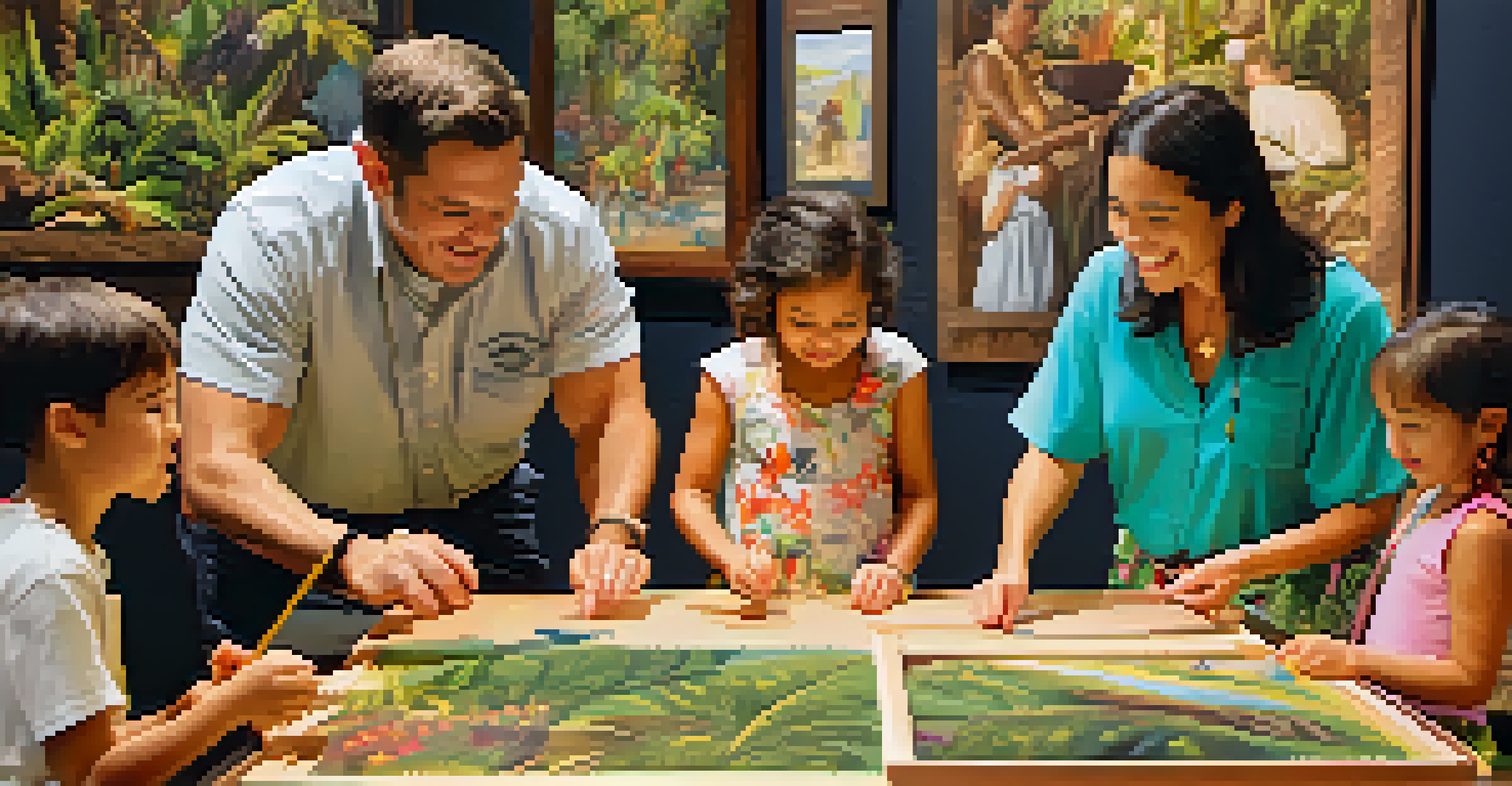Exploring the Bishop Museum: A Treasure of Hawaiian History

Introduction to the Bishop Museum: A Cultural Icon
Located in Honolulu, the Bishop Museum stands as a beacon of Hawaiian culture and history. Founded in 1889, it's the largest museum in the Pacific and offers a glimpse into Hawaii's past. With its vast collections and educational programs, it serves as a vital resource for both locals and visitors alike.
The museum is a living testament to the richness of Hawaiian culture and the importance of preserving our heritage for future generations.
The museum was established by Charles Reed Bishop in memory of his wife, Princess Bernice Pauahi Bishop, the last descendant of the Kamehameha dynasty. This personal touch adds a layer of significance, as it reflects both love and a commitment to preserving Hawaiian heritage. Today, it continues to honor this legacy through its exhibits and outreach.
As you walk through its doors, you’re not just entering a museum; you’re stepping into a world where history, culture, and art intertwine. It's a place where stories of the past come alive, inviting everyone to learn and appreciate the unique tapestry that is Hawaii.
The Rich Collections: Artifacts and Exhibits
One of the main draws of the Bishop Museum is its extensive collection of Hawaiian artifacts. From ancient tools and royal regalia to traditional garments, each piece tells a story of the island's rich history. The exhibits are thoughtfully curated, allowing visitors to engage with the past in meaningful ways.

A highlight is the Hawaiian Hall, which showcases the cultural heritage of the islands through various displays. Here, you can find everything from intricate feather capes to carved wooden statues, all symbolizing the artistry and craftsmanship of Hawaiian ancestors. Each exhibit serves as a window into the customs and traditions that have shaped modern Hawaii.
Cultural Heritage and Artifacts
The Bishop Museum showcases Hawaii's rich history through extensive collections of artifacts, including ancient tools and royal regalia.
Moreover, the museum regularly hosts temporary exhibitions, ensuring there’s always something new to explore. This dynamic approach not only keeps the experience fresh for repeat visitors but also highlights the ongoing evolution of Hawaiian culture in contemporary times.
The Science of Natural History: A Unique Perspective
Beyond cultural artifacts, the Bishop Museum is also renowned for its natural history collections. These exhibits delve into the diverse ecosystems of Hawaii, showcasing everything from native plants to unique animal species. It's a fascinating journey through the islands' natural beauty and environmental challenges.
Museums are not just about displaying artifacts; they are about telling stories that connect us to our past and inspire future generations.
One notable aspect is the museum's dedication to scientific research and conservation. Through partnerships with local universities and organizations, they work tirelessly to protect Hawaii's fragile ecosystems. This commitment demonstrates how the museum plays a vital role in both education and preservation efforts.
Visitors can often see interactive displays or participate in workshops that explore these themes further. This hands-on approach not only enhances learning but also fosters a deeper appreciation for the natural world and its interconnectedness with Hawaiian culture.
The Importance of Education and Outreach Programs
Education is at the heart of the Bishop Museum’s mission. The museum offers a variety of programs designed to engage students and families, ensuring that the history and culture of Hawaii are accessible to all. From school tours to hands-on workshops, there’s something for everyone to enjoy.
These educational initiatives often include collaborations with local schools, providing resources and materials that enhance classroom learning. By connecting students with their heritage, the museum helps foster a sense of pride and identity among the younger generation. This commitment to education is vital for preserving Hawaiian culture.
Education and Community Engagement
The museum prioritizes education through various programs and events that connect locals and visitors with Hawaiian culture and heritage.
Additionally, the museum hosts family-friendly events and cultural festivals throughout the year. These gatherings provide a fun, interactive way for families to learn together, making history come alive through music, dance, and storytelling.
Exploring the Grounds: A Natural Oasis
The Bishop Museum is not just about the indoor exhibits; its grounds are a treasure in themselves. Lush gardens and beautiful landscapes surround the museum, inviting visitors to explore Hawaii's natural beauty. A stroll through these gardens offers a peaceful respite from the bustling city.
As you wander, you'll notice native plants that are essential to Hawaiian culture, such as ti leaves and taro. Each plant has its own significance, often tied to historical uses or traditional practices. This connection to the land enhances the overall experience, linking the exhibits inside the museum to the natural world outside.
The outdoor spaces also serve as venues for various events, ranging from art shows to cultural performances. This integration of nature and culture enriches the visitor experience, making the museum a holistic destination that nurtures both the mind and the spirit.
Visitor Experience: Practical Tips for Your Journey
Planning a visit to the Bishop Museum? It's helpful to know a few tips to make the most of your experience. First, consider allocating a full day to explore everything the museum has to offer. With multiple galleries and outdoor spaces, there’s plenty to see and do, so take your time and soak it all in.
Don’t forget to check the museum’s schedule for special events or guided tours. These can provide deeper insights into the exhibits and enrich your understanding of Hawaiian history. Plus, engaging with knowledgeable staff can enhance your visit and answer any questions you might have.
Natural Beauty and Outdoor Spaces
Surrounded by lush gardens, the museum offers a serene environment that enhances the experience of exploring Hawaii's culture and history.
Lastly, be sure to visit the museum shop, where you can find unique souvenirs that celebrate Hawaiian culture. From locally-made crafts to educational books, it’s a great way to bring a piece of your experience home while supporting local artisans.
Conclusion: A Must-Visit for History Enthusiasts
In conclusion, the Bishop Museum is a must-visit destination for anyone interested in Hawaiian culture and history. Its extensive collections, engaging programs, and beautiful grounds offer a comprehensive view of the islands' past and present. Whether you’re a local or a tourist, there’s something here for everyone.
As you explore the museum, you’ll find yourself immersed in stories that span generations, connecting you to the spirit of the islands. It’s not just a place to observe history; it’s a space to experience and understand the richness of Hawaiian life.

So, if you ever find yourself in Honolulu, make sure to carve out some time to visit the Bishop Museum. You’ll leave with a deeper appreciation for Hawaii’s heritage and a treasure trove of memories to carry with you.